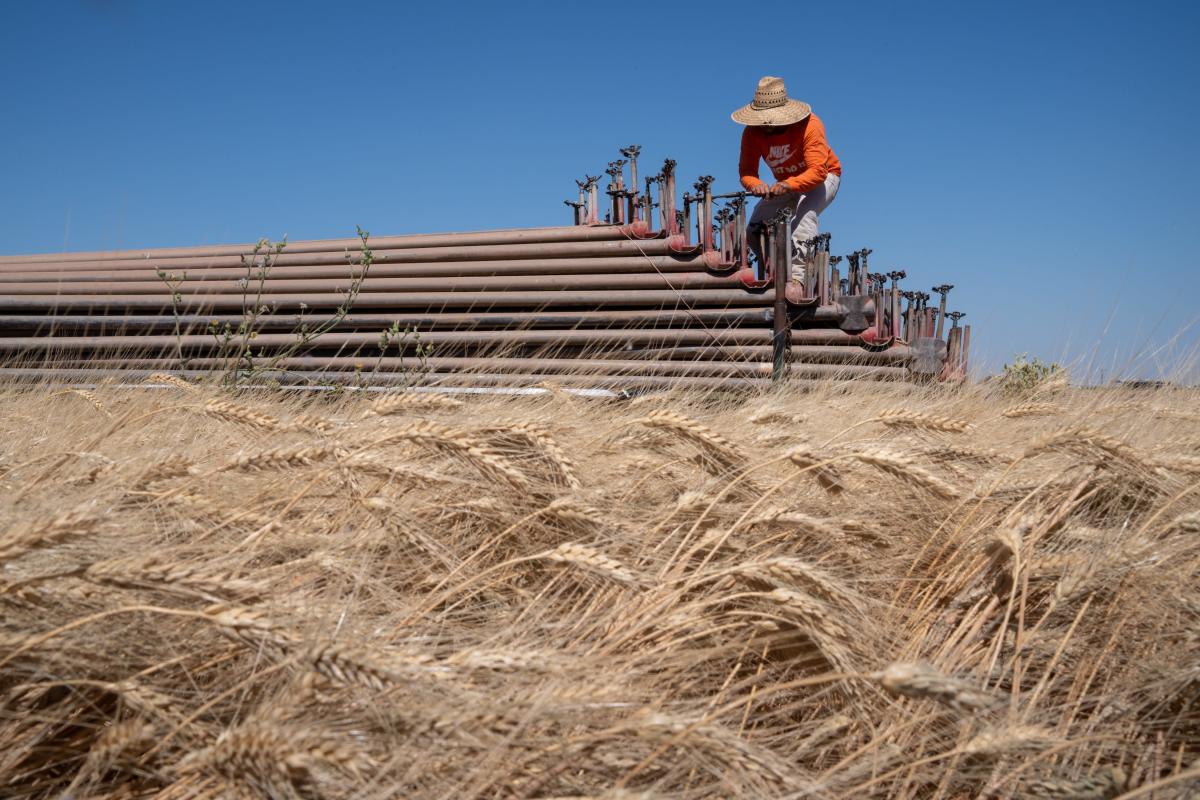The 2018 Farm Bill, the largest piece of federal legislation affecting farming and food assistance in the U.S., is past its renewal deadline and stuck in Congress.
After being extended once, the measure, known as the Agricultural Improvement Act, died on Sept. 30, which means time is up for the programs and funding within it.
Food assistance programs like SNAP and disaster relief funds are not at risk, nor are crop insurance programs. But if Congress doesn’t renew the bill by the start of the year or pass a new one, price supports would return to 1940 levels and lead to higher government spending.
Party-line disagreements and negotiations have kept the new farm bill over a year behind schedule, and experts say it will be a bumpy road before it can become law.
The massive 5-year law influences an array of programs, including price supports for agricultural commodities, foreign trade assistance, environmental conservation programs, loans and credits, research, and providing nutrition assistance for millions of people. Its last iteration had a price tag of $428 billion for a five-year period; a new one could be close to $1.5 trillion for the next 10 years.
“It’s just one of those bills that deals directly with our everyday life,” said former U.S. Rep. Tom O’Halleran, who represented Arizona’s Congressional District 1 and was a member of the House Agricultural Committee from 2017 to 2023.
Congress could extend the 2018 farm bill a second time, or pass a long-awaited new one, but action will come after the election at its earliest, O’Halleran said.
“That causes a disruption in the system, as any continuing resolution does.”
One of the biggest shortfalls of the 2018 bill is that it no longer reflects 2024 cost of production, financial risks, or inflation, and “many of the provisions no longer meet the needs of today’s agricultural economy,” said Chad Smith, director of government relations with the Arizona Farmers Bureau.
Safety net programs, like the price loss coverage, are less effective in protecting farmers, he added.
Arizona cotton grower Adam Hatley told members of the U.S. House of Representatives Agricultural Committee that he and his fellow growers expected a 25% to 40% increase in input costs, just from one year to the next.
“As producers, we must have an effective safety net,” he said in the 2022 listening session held in Coolidge. “This includes a commodity policy that provides either price or revenue protection for prolonged periods of low prices and depressed market conditions.”
Agriculture: Drought conditions, prices push Arizona cattle growers to sell portions of their herd
Expiration dates for crop price supports
Last week, several programs died along with the Farm Bill; for others, time is ticking.
Some programs have their day-to-day authority bound to the Farm Bill and shut down immediately on Oct. 1. These included programs created for foreign trade promotion, biofuel advancement and bio-based products markets, animal health, along with the National Organic Certification Cost-Share program, the Healthy Forest Restoration Program, and the Watershed Rehabilitation Program.
Programs within farm bill sections related to research, energy, and horticulture may not be authorized to keep running or enact spending.
Support for these programs would resume if the 2018 bill is extended a second time, or when a new one is approved.
Nutrition programs like the Supplemental Nutrition Assistance Program or SNAP, previously known as “food stamps” program, are not affected by the expiration. That is also the case for crop insurance programs and disaster programs, which provide a critical safety net for farmers and ranchers across the country. These program benefits will remain without improvement until a new bill comes.If there is no action from Congress by New Year’s Eve, a dangerous scenario would unfold.
Price support programs would revert to how they were established in the 1940s. It would trigger “price support on steroids,” wrote the Farm Bureau’s chief economist Roger Cryan.
Faces of Arizona: Raising chiles or raising questions over Arizona water, Ed Curry has ‘skin in the game’
‘Red-line’ issues remain for Democrats
The House and Senate Agricultural Committees hold hearings, negotiate and produce drafts for a new farm bill, but they sat on a proposal for months. As in past farm bill negotiations, the debate is on priority setting, said O’Halleran. “There’s always a balancing act.”
Congress extended the 2018 bill in November of last year. The House committee released its draft in May. The Senate committee has only released a high-level summary. The strongest opposition from Senate Democrats to the nearly 1,000-page draft is on changes to the SNAP program and climate-smart policy.
The House version of the bill would freeze SNAP benefits, resulting in a cut of $30 billion over the next decade, affecting about 41 million people who are enrolled in the program.
It would also remove a “climate-smart” earmark of $13 billion from the Inflation Reduction Act, making that funding available for a long list of conservation programs, even if they don’t prove a climate change mitigation benefit. Both are “red line” issues for Democrats.
There are narrow margins for a vote: The Senate Agricultural Committee is Democratic-led, while the House Committee has a Republican majority.
“The likelihood of another extension of the 2018 Farm Bill is extremely high, given the current political gridlock in Congress,” wrote Smith, with the Arizona Farm Bureau.
“We remain optimistic and will continue to call on Congress to pass a Farm Bill, the idea of passing one in a lame duck is not out of question.”
Indigenous agriculture: USDA seeks to expand world markets for Native produce
What Arizonans hope for
One expected change in the next farm bill iteration is that it improves natural disaster response.
“The last couple of farm bills have started to go in that direction of being able to adjust to the changing environment,” said O’Halleran. He expects that trend will continue.
Smith also said the Farm Bureau expects the bill will address the “natural disasters and economic challenges” affecting state producers. Amendments should prioritize “targeted drought relief and water conservation programs tailored to the needs of the Southwest,” he said, to address unique challenges that don’t fit the federal one-size-fits-all approach.
Nancy Caywood, owner of a fifth-generation farm in Pinal County, also stressed this point at the 2022 listening session in Coolidge.
“Our need for water is critical,” she said. “A solution that I would like to suggest is that farmers receive assistance money from the Farm Bill to help cover the water portion of tax bills during drought years when water is not available. It is our job as farmers to provide food and fiber for our nation and our world and without water that is not possible.”
The Farm Bill is also the backbone of anti-hunger programs. The “nutrition title” within the legislation makes up 80% of the whole funding.
Angie Rodgers, president and CEO of the Arizona Food Bank Network, a coalition of all food banks that distributes food to 15 counties, including remote tribal communities, encouraged Congress to increase the baseline funding for the Emergency Food Assistance Program and adjust it to inflation.
The organization normally serves 460,000 people each month. That number doubled and even tripled during the pandemic, she said. And the demand is still high.
COVID-era SNAP emergency allotments, which ended in March of last year, “were a game changer for families living on the edge,” she said.
“One woman told me that the one thing she didn’t have to worry about that month was groceries, which made for paying for child care, rent, gas, and the electric much more possible.”
The adjustment would help anti-hunger goals and benefit farmers, who get higher revenue per pound at food banks than retail stores.
O’Halleran said another key improvement for the next omnibus legislation would be a stronger framework of inclusion and better guidelines for outreach. The language and guidelines can make a difference in how agencies and local parties work together, “a government-of-the-whole approach.”
“You want to do it based on the needs of our citizens,” he said. “And the only true way of finding out about the needs of our citizens is to talk to them.”
Clara Migoya covers agriculture and water issues for The Arizona Republic and azcentral. Send tips or questions to [email protected].
This article originally appeared on Arizona Republic: The U.S. Farm Bill expired, creating doubt about aid















